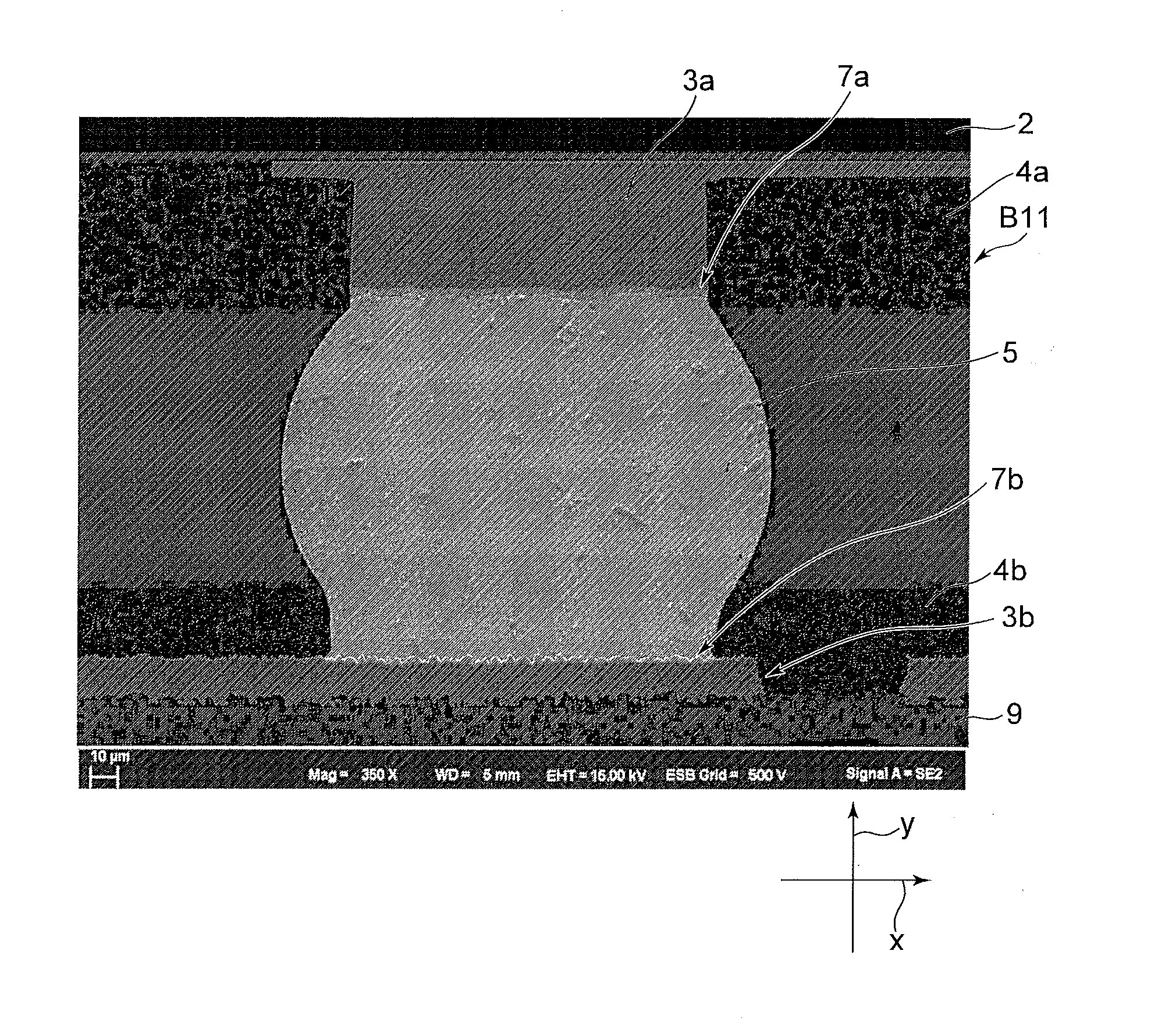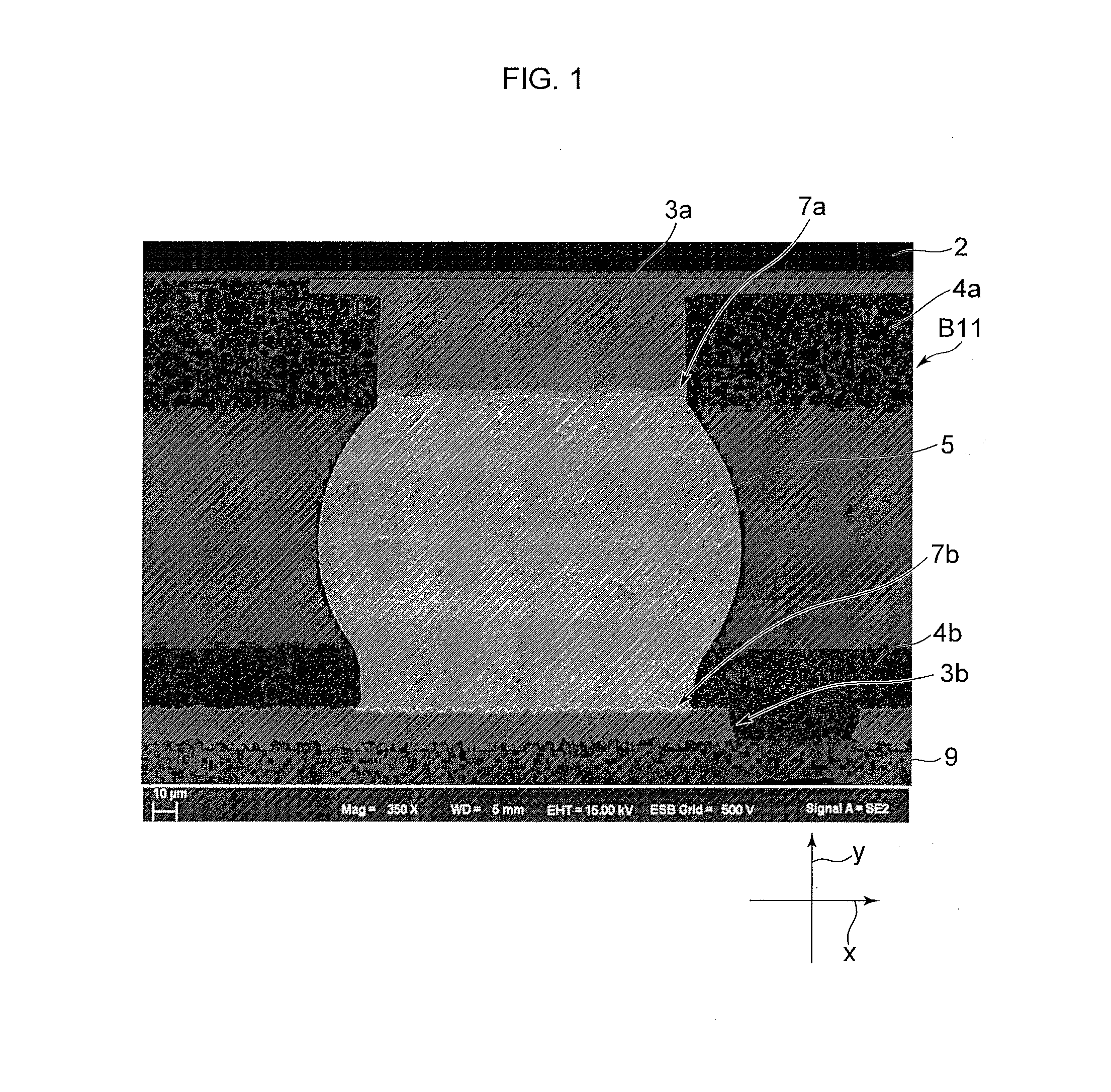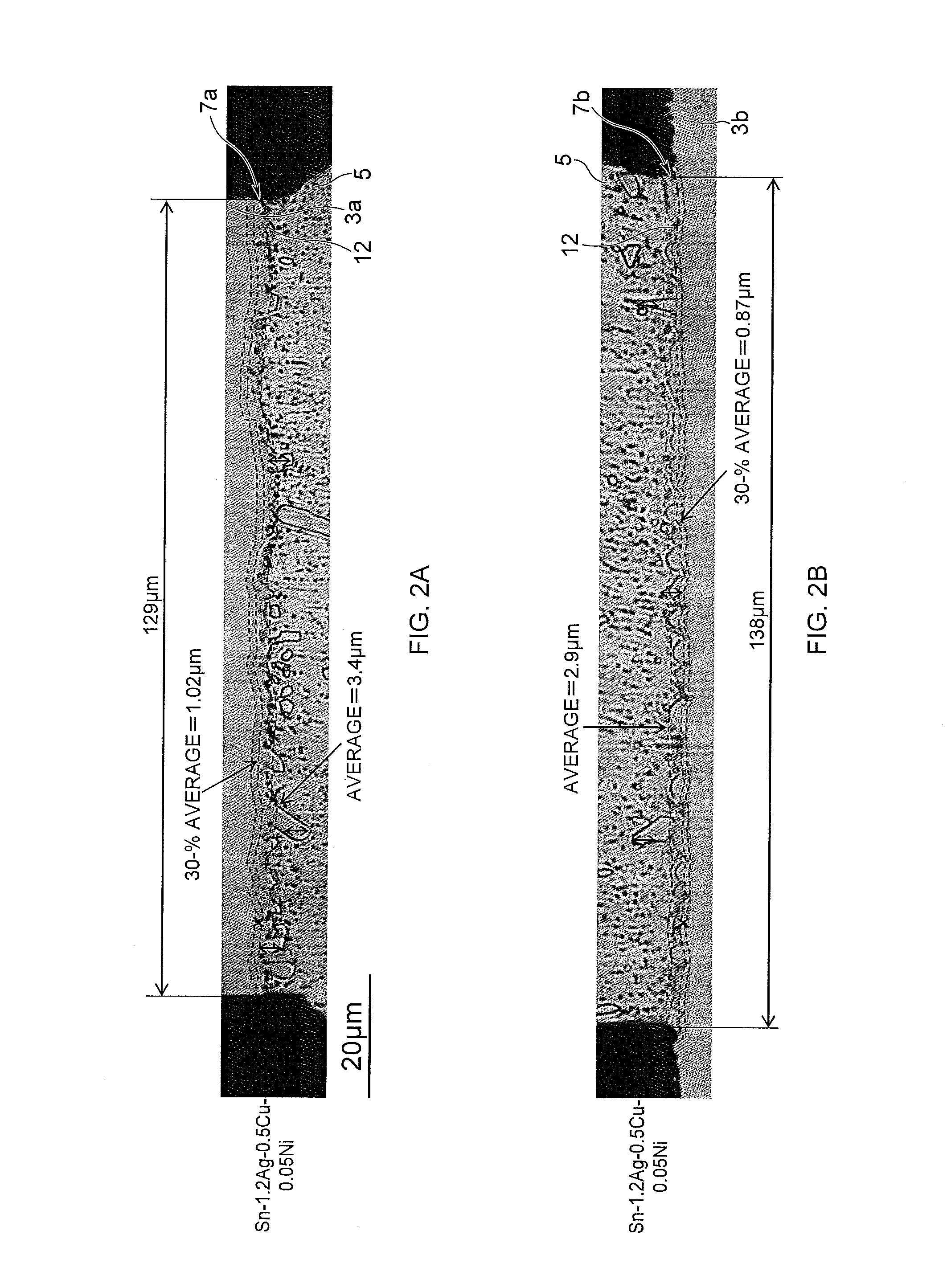Lead-free solder bump bonding structure
- Summary
- Abstract
- Description
- Claims
- Application Information
AI Technical Summary
Benefits of technology
Problems solved by technology
Method used
Image
Examples
example
[0094]An explanation will be below given of examples. In this explanation, as illustrated in FIG. 8, a test circuit 21 electrically connected with eight lead-free solder bump bonding structures B11 to B41, B12 to B42 was prepared, and an interface shape of an IMC interface in the lead-free solder bump bonding structure B11 and the anti-electromigration characteristic of the lead-free solder bump bonding structures B11 to B41 and B12 to B42 were tested. According to the test circuit 21, the Cu electrode 3a of the first electronic component 2 and the Cu electrode 3b of the second electronic component 9 were bonded together by multiple lead-free solder bumps 5 to form a total of eight lead-free solder bump bonding structures B11 to B41, and B12 to B42 that were four by two at a center region. Note that reference numeral 25 in FIG. 8 denotes a thermocouple element.
[0095]According to the test circuit 21 of the example 1, a wafer-level package (WLP) cut out from an Si chip was used as the...
PUM
 Login to view more
Login to view more Abstract
Description
Claims
Application Information
 Login to view more
Login to view more - R&D Engineer
- R&D Manager
- IP Professional
- Industry Leading Data Capabilities
- Powerful AI technology
- Patent DNA Extraction
Browse by: Latest US Patents, China's latest patents, Technical Efficacy Thesaurus, Application Domain, Technology Topic.
© 2024 PatSnap. All rights reserved.Legal|Privacy policy|Modern Slavery Act Transparency Statement|Sitemap



